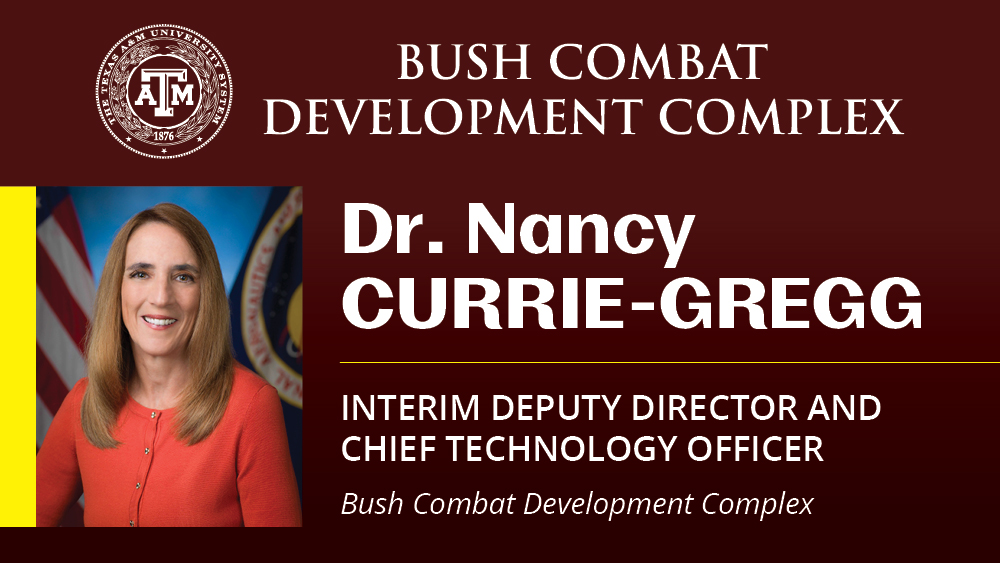
The Texas A&M University System has named Dr. Nancy Currie-Gregg interim deputy director and chief technology officer of the George H.W. Bush Combat Development Complex (BCDC). She assumed the duties of the position on June 7.
Currie-Gregg will oversee the BCDC’s research, events and projects while a search is conducted to fill the position. She joined the BCDC, located on the Texas A&M System’s RELLIS Campus, in 2019 at its inception, serving as the systems engineering and research integration lead. Currie-Gregg is a holder of the Don Lummus ‘58 Professorship of Practice in Engineering, with appointments in the Texas A&M University Department of Aerospace Engineering and the Wm Michael Barnes ’64 Department of Industrial and Systems Engineering.
She develops and teaches graduate and undergraduate courses in aerospace human factors engineering, quantitative risk analysis and reliability engineering, system safety engineering and resilient systems engineering. Her research interests include spacecraft occupant protection, human-robot interaction, and the optimization of human performance and safety in engineered systems.
Prior to joining Texas A&M in the fall of 2017, Currie-Gregg spent the vast portion of her career supporting NASA’s human spaceflight programs and projects. Selected as an astronaut in 1990, she accrued more than 1,000 hours in space as a mission specialist on four space shuttle missions — STS-57 in 1993; STS-70 in 1995; STS-88, the first International Space Station assembly mission, in 1998; and STS-109, the fourth Hubble Space Telescope servicing mission, in 2002.
A retired U.S. Army colonel and master Army aviator, she logged more than 4,000 flying hours in a variety of rotary-wing and fixed-wing aircraft. Following the Space Shuttle Columbia tragedy in 2002, she led the Space Shuttle Program Safety and Mission Assurance Office, directing safety, reliability and quality assurance efforts enabling the safe return to flight of the space shuttle in 2005. She was then selected as a senior executive member of the NASA Engineering and Safety Center, serving for over a decade as the chief engineer at the Johnson Space Center, then as principal engineer.
Currie-Gregg earned her bachelor’s degree in biological sciences (interdisciplinary) from The Ohio State University, her master’s degree in safety engineering from the University of Southern California and her doctorate in industrial engineering, with a specialization in human factors engineering and artificial intelligence, from the University of Houston.
Currie-Gregg replaces outgoing BCDC deputy director and chief technology officer Dr. John E. Hurtado, who was named interim vice chancellor and dean of the College of Engineering at Texas A&M and interim agency director of the Texas A&M Engineering Experiment Station (TEES) in May.
